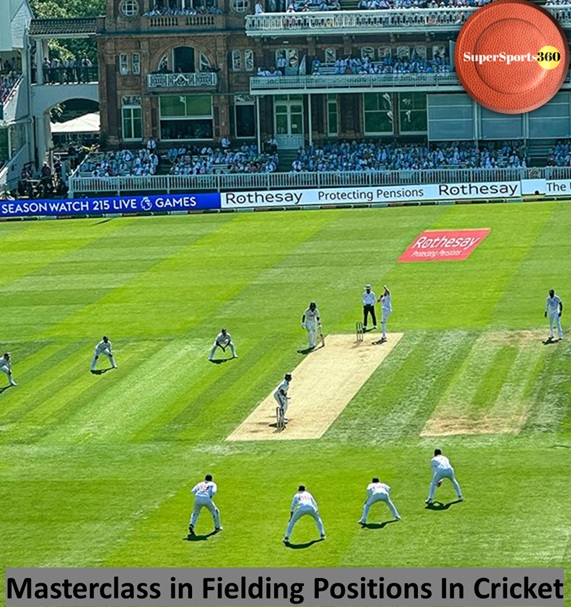Fielding positions play a vital role in the game of cricket. Fielding in cricket is often overshadowed by the glamour of batting and bowling, but it is a crucial skill that can turn the tide of a match. Unlike batting and bowling, which rely heavily on natural talent and conditions, fielding is a skill that players can continuously improve through practice. A sharp fielding unit not only restricts runs but also creates wicket-taking opportunities and applies pressure on the batsmen.
In this blog, we break down the key fielding positions in cricket, their strategic roles, and highlight some of the greatest fielders who have excelled in these positions.
Why Fielding Matters in Cricket
Fielding is the unsung hero of cricket. Brilliant catches, swift run-outs, and tight ground fielding can change the momentum of any game. Every fielding position on the ground has a distinct purpose, and captains carefully place their best fielders where they can make the most impact.
Every format of cricket has specific fielding restrictions to keep the game fast-paced and competitive, but the fundamental goal remains the same: restrict runs and create chances to dismiss the batsman.

Key Fielding Positions in Cricket
The cricket field is divided into an inner circle (30-yard circle) and an outer circle. Fielders are strategically placed in both to prevent runs and catch opportunities.
- Slips
- Fielding Position: Beside the wicketkeeper on the off-side, usually 1-3 fielders.
- Role: Catch edges off fast bowlers or spinners.
- Skills: Quick reflexes, agility, and natural catching ability.
- Famous Slip Fielders: Mahela Jayawardene (most catches in slips), Joe Root, Mark Wagh.
- Gully
- Fielding Position: Wider and deeper than slips, near the off-side square.
- Role: Catch quick edges and cover sharp shots.
- Skills: Agility and quick lateral movement.
- Famous Fielder: AB de Villiers.
- Point & Backward Point
- Fielding Position: Square to the batsman on the off-side.
- Role: Cut off square cuts, backward drives, and take catching chances.
- Skills: Agile, light-footed, excellent catching.
- Famous Fielders: Jonty Rhodes, Ravindra Jadeja.
- Covers
- Fielding Position: Between point and mid-off on the off-side.
- Role: Stop drives and prevent quick singles.
- Skills: Quick on feet, strong throwing arm.
- Famous Fielder: Virat Kohli.
- Mid-Off / Mid-On
- Fielding Position: Close to the bowler on off-side (mid-off) and leg-side (mid-on).
- Role: Save singles, cover straight drives, and often captains’ preferred spots for field adjustments.
- Skills: Quick reflexes, good communication.
- Famous Fielders: Typically captains or senior players.
- Short Leg / Silly Point
- Fielding Position: Very close to the batsman, on leg side (short leg) or off side (silly point).
- Role: Catch sharp edges or defensive strokes from spinners.
- Skills: Exceptional reflexes, courage, and agility.
- Famous Fielder: Eknath Solkar.
- Wicket-Keeper
- Fielding Position: Behind the stumps.
- Role: Catch balls, effect stumpings, and support bowlers.
- Skills: Lightning-fast reflexes, excellent catching, and glove work.
- Famous Wicket-Keepers: Adam Gilchrist, Ian Healy, Kumar Sangakkara.
- Third Man / Fine Leg
- Fielding Position: Behind the batsman near the boundary on off side (third man) or leg side (fine leg).
- Role: Save boundaries and catch edges.
- Skills: Good anticipation but usually assigned to weaker fielders.
- Deep Mid-Wicket / Long-On / Long-Off
- Fielding Position: Boundary positions on the leg side (deep mid-wicket) and off side (long-on, long-off).
- Role: Catch big hits and prevent boundaries.
- Skills: Strong catching ability and high concentration.
- Famous Fielders: Kieron Pollard, Trent Boult.
Strategic Importance of Field Placement
The best captains use field placements to control the game. They analyze the batsman’s strengths and weaknesses, and bowlers bowl accordingly to force shots into the fielders. Smart fielding strategies help to:
- Restrict runs and build pressure
- Create wicket-taking opportunities via catches and run-outs
- Manipulate batsmen to hit towards the stronger side of the field
Final Thoughts
Fielding can often be the difference between winning and losing in cricket. The positions may seem technical, but each has a crucial role that demands specific skills and tactics. Whether it’s the electrifying slip catch or the boundary-saving dive at long-off, every fielder plays a vital role in the team’s success.
Summary
Fielding in cricket is a pivotal yet often underappreciated aspect of the game. While batting and bowling grab most of the attention, strong fielding can shift a match’s momentum, restrict runs, and create wicket-taking opportunities. Field placements are strategic tools for captains to exploit opposition weaknesses and maximize team performance. Ultimately, great fielding is what separates good teams from truly elite ones.
Also Read : Importance of fielding
Our website : supersports360.com
Trending Article:
Time to look beyond Bumrah in Test Cricket
Join us on Twitter (x) : @360supersports



Leave A Comment